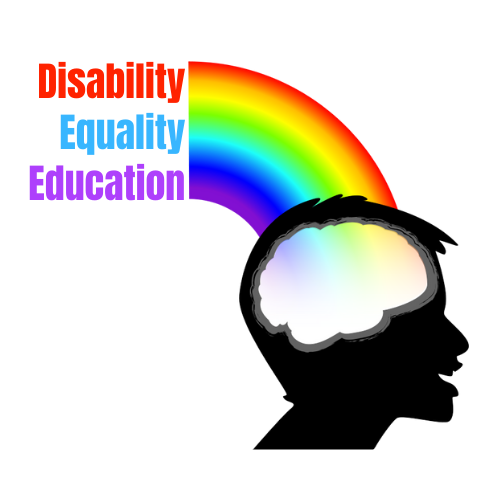What is Disability Inclusive Curriculum and why is it essential?
What do we mean by “Disability Inclusive Curriculum”?
Disability Inclusive Curriculum is for ALL students. Those with or without disabilities.
Representation
Disability is represented in all aspects of school, from the books on the shelves, and the lessons being taught to the examples used in worksheets, tests, reading material and word problems.
The books and materials that students use show disabled people doing average things.
Social Model
Disability is taught through the social model lens, not a medical (only) lens.
Disability Rights Movement
Students of all ages are learning about the disability rights movement in age-appropriate ways.
As with other social movements, the various parts of the Disability Rights Movement are included in social studies and history classes.
Included
Disability is not omitted when discussing a famous person. It is intentional to include the fact that the person was disabled/had a disability, as part of that discussion.
Disability is included in all diversity initiatives.
Regularized
Conversations about disability happen regularly, throughout the school year, not only on special occasions or health class
Disability is included and regularized in routine classroom activities such as journal prompts, calendars of events, posters, guest speakers, etc.
Negative attitudes and stereotypes are countered and removed from the school culture.
Why is it essential?
Disability inclusive curriculum provides students, both disabled and non-disabled, with a positive, or neutral, understanding of disability.
What is taught about disability should be designed and led by disabled people themselves. The belief that “Nothing About Us, Without Us” is practiced.
A fundamental shift in thinking will, in turn, lead to a more inclusive, equitable, and accessible world for all in the future.
Students deserve to learn about disability through the lens of diversity and contribution rather than deficit and burden, as is so routinely the case.
Disability impacts over 20% of the population and knows no limit regarding age, gender, race, sexual orientation, religion, socioeconomic status, or political affiliation.
When disability is not included, or only discussed medically or as a problem, it sends the message that disability is rare and bad, which it is not.
Disability is a natural part of the human condition and should be represented as such in all school lessons, materials and programs.
Students need to see diversity in the curriculum, in books and in their lesson plans.
If the disability community is represented in educational materials, then all students will learn about positive role models that look like them.
Disability is a part of human diversity. Disabled people are of the largest marginalized groups. It includes and intersects many marginalized identities.
As Nikhil Kishore wrote in his article, Setting Up a Disability-Inclusive Curriculum:
“The stories and narratives we tell and use in our classrooms matter. The resources that we use, the people who appear in our curriculum, and the activities we design for students reveal and promote society’s beliefs about identity, diversity, and power. Moreover, they develop or limit potential and belonging within that society. Teachers and curriculum designers must, therefore, review instructional materials and incorporate resources and lessons that include individuals with disabilities.”
“A more accurate, representative, and inclusive curriculum will support student belonging and the development of a healthy school community—and, ultimately, it will promote a more just, democratic, pluralistic, and egalitarian society.”
Nik wrote this when he was in 10th grade in January 2022 and we are honored to have his passion and involvement in the Coalition On Disability Inclusive Curriculum.
With disability inclusive curriculum we envision a world where:
Disability is no longer stigmatized.
Students with disabilities are no longer bullied at a higher rate than their non-disabled peers.
Students are empowered with the information they need to be the leaders we need to build a more accessible and accepting future.
Disability is regularized and not seen as something that must be fixed or is wrong.
Disabled students feel more supported.
Non-disabled students recognize how they can make the world more accepting and accessible for their disabled peers.
Non-disabled students will have a better understanding of the disability community and leadership so that they are better prepared and informed if/when they themselves become disabled and/or a family member, friend or loved one becomes disabled in the future.
If you are interested in teaching our lessons but need extra support, we are here for you!
We can provide training and professional development on talking about disability in the classroom and more. Just contact us to learn more.
Here are some other articles and resources we’ve found that speak to this:
A Disability Inclusive Curriculum Benefits All Students featuring Dr. Jessica McQueston (podcast with transcript)
Setting Up a Disability-Inclusive Curriculum by Nikhil Kishore
Embracing Disability Culture in Schools by Toni Saia
